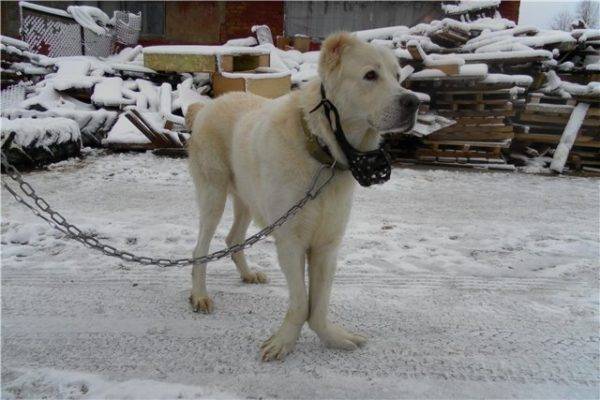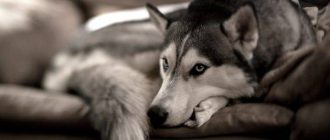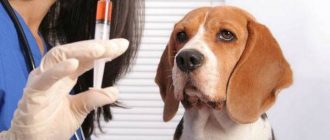Dysplasia in dogs is a pathological change in the tissues. joints that can be detected in any doggie, however, statistics indicate that more often from this disease suffer representatives of large and giant breeds. Although the disease is not congenital nature, specialists are sure that hereditary factors play an important role in its development. How does it manifest dysplasia, and what therapeutic methods does modern offer veterinary medicine.
Content
- 1. Causes of dysplasia in dogs
- 2. Symptoms of dysplasia in dogs
- 3. Diagnosis of the disease
- 4. Video about dog dysplasia
- 5. Treatment of dysplasia in dogs
Causes of Dog Dysplasia
Contents

This disease is quite serious, since accompanied by defeat and further destruction of the elbow and the hip joint. With the progression of pathological Dog processes cannot even walk. Among the common The causes of the disease include the following:
- heredity – parents suffering from dysplasia are born offspring that will also suffer from this disease, therefore for breeding, individuals who do not have a similar ailment are selected;
- poor, poor nutrition – dysplasia can quickly develop amid deficiency or overabundance in the body of the animal calcium
- overweight is one of the reasons that accelerates pathological processes
- insufficient (inactive) or excessive (hyperactivity) physical activity – this factor is especially dangerous for puppies of giant dogs and large breeds;
- limb injury – dislocation or fracture can lead to the appearance of the disease, but this does not happen so often, it may occur a rare type of knee dysplasia.
According to the classification, several degrees are distinguished disease:
- I (A) – there are no disorders in the joint tissues;
- II (B) and III (C) – there are cases of dislocations;
- IV (D) – medium degree of illness and V (E) – severe degree – pathology leads to structural changes in the joints, goes destructive process in the tissues.
The disease can affect two types of joints, hence the types- dysplasia of the hip and elbow joints.
Be sure to read about arthrosis in dogs.
Symptoms of Dog Dysplasia

Often the diagnosis of “dysplasia” is given to young dogs from a year to one and a half. This is due to intensive growth and mass gain. body, which, in turn, has a huge load on joints. Initially, the pet begins to limp and this happens maybe by the age of two. Clinical symptoms vary by type. defeat and its degree:
- Pathology of the elbow joints. In this case the animal begins to limp on the forelimbs, most often damage affects both joints. The pet feels pain when bending the paws, does not give a paw at the command, whines, if to the paws touch. Possible formation in the area of damage to the seals. With severe pain, the puppy carefully, slowly descends up the stairs or refuses to move, so it causes him severe pain. Stratification of the joint tissue may occur, then a new fragment may appear on the joint. With significant joints can become flat, causing friction about each other. And sometimes pathology leads to the fact that the joint, losing fastening, begins to hang out.
- Hip pathology. Ailment can it is asymptomatic for a long time. In severe forms of the disease puppies begin to wobble when walking, it is difficult for them to climb steps or they refuse to do it. Since lameness manifested with significant changes in the joints, the owners it is advisable to pay attention to earlier signs of the disease. You can start to worry if the puppy is often lying, placing the hind legs in different directions. In addition, the disease leads to rapid fatigue of the animal during long walks, and there is also a rabbit run movement, that is, when dog, running, trying to push off with both hind limbs at the same time.
In some cases, the diagnosis of dysplasia occurs in at an earlier age – at 4-5 months, when the animal is back limbs are not strong enough. In this case, required conducting emergency therapy without waiting for a year of age. IN otherwise, the risks of developing another serious pathology – osteoarthritis.
Diagnosis of the disease
Identification of pathological changes in veterinary conditions Clinics are performed using an x-ray machine. One and a half year old dogs are examined by a specialist, feels a sore limb. Special tests are also used, for example, Ortolani.
Dog Dysplasia Video
Dog Dysplasia Treatment
Unfortunately, in modern veterinary medicine there are no ways to completely rid the dog of this pathology. But timely complex treatment can slow down its development and improve quality of life of a sick animal.
If your pet has dysplasia, you will have to apply a maximum efforts that he lived longer without pain and difficulties. Necessary the use of various kinds of drugs, including with analgesic effect. To relieve pain, vets Quadrisol-5 is often prescribed, to eliminate the inflammatory process – Phenylbutazone, and to stop the destruction processes – Stride. Rimadil helps to eliminate or reduce lameness, but his animal must be taken throughout life. Specialists homeopathic remedies are often prescribed, for example, Traumeel.
See how to give medicine the dog.
Also, therapy includes the intake of vitamin-mineral complexes, adjustment of nutrition and physical activity. However worth consider that traditional therapy is not able to cure an ailment, it only eliminates the symptoms.

With complications and advanced pathological processes, veterinarians decide to use operational techniques. However, this does not happen often, since there are no guarantees there is no positive result, and doctors are not encouraging owners. The type of operation is determined after a complete diagnosis, this may be the following activities:
- Crest muscle myectomy. Not complicated surgical intervention, during which dissection occurs the crest muscle located in the hip joint. it reduces soreness during mobility and pressure on affected joint. Such manipulation is prescribed only to young animals to stabilize their condition.
- Resection of the femoral head. This operation is also called resection arthroplasty. It includes head removal the hip bone, and the limb is secured thanks to a special bunch. After such an intervention motor function is preserved only in small pets, weight which does not exceed 15 kg. Therefore, its holding by representatives large and giant breeds will not give the expected result.
- Triple pelvic osteotomy method. Considered a complex operation, which not every specialist can do. When carrying out a bone having a cavity is dissected, then it is deployed so so that it comes into closer contact with the hip joint. An additional plate is used to fix the bone. The the method is used to treat only young animals.
- Intervertebral osteotomy method. The technique is to remove the wedge-shaped part of the neck. As a result, its end tightly enters joint recess, fixation is carried out using a plate.
- Endoprosthetics (replacement) of the joint. The operation is carried out in clinics with special equipment, tools and prostheses. The operation consists in the complete removal of the diseased joint and replacement its new. This surgery gives good results and in most cases the dog starts fully live.
A pet suffering from joint dysplasia must take drugs or nutritional supplements that include chondroitin and glucosamine. They are also recommended to give puppies for disease prevention, especially to representatives of large breeds. Naturally, this is not a full treatment, but only a restraining one. factor to reduce the negative impact pathology.
In the diet, it is recommended to provide the pet with products with high nutritional value and exercise strict body weight control. It is worth considering the existing standards puppy weights according to breed and age.
Pets who have a tendency to this disease or the disease is already diagnosed, physical load. Long runs, active jumping games can lead to to the intensive development of pathology and worsening of the condition. But also it is not necessary to completely exclude activity, it is important to have everything measure.
Intensive loads are not recommended for dogs until six months, but here the animal can swim as much as desired. With age required increased activity of the pet, but this must be done carefully and preferably after the recommendation of a veterinarian.
The disease requires special care for the pet, and depends on the owner how high-quality and durable there will be a dog’s life without pain and suffering.






